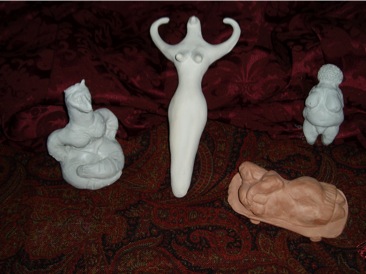
by Etain
A Lithuanian Litany For Marija Gimbutas
May the earth-mother Zemyna hold you in gentle
embrace.
May Medeine, spirit of the forest, shade you
in summer.
May the rays of the goddess Saule warm
you in winter.
And may Laima, lady of good fortune, bring to
fruition
all that you conceived.
~~Hilja and Roger Wescott
April 1994

Little
did I know when I chose Marija Gimbutas to write about for my final project that
there would be so much research material available about her. She is mentioned
and discussed in almost every Goddess book that I have on my shelves and then of
course she herself was a prolific writer with more than twenty books and hundreds of articles to her credit. There are
videos of her lectures and audio tapes of her interviews, there are anthologies
and biographies and I haven’t even mentioned all the web sites..... It has been
quite the adventure to get to where I am now, simply scratching the surface with
my report about this extraordinary Goddess Woman. It became obvious to me during
my research that my love for her is well shared across the world by millions,
men and women alike.
“The Goddess in all her
manifestations was a symbol of the unity of all life in Nature. Her power was in
water and stone, in tomb and cave, in animals and birds, snakes and fish, hill,
trees and flowers.”
~~Marija Gimbutas
An
Incredible Goddess Among Us: Marija Gimbutas
Born in Vilnius, Lithuania
on January 23, 1921 Marija Birute Alseikaite to parents, both doctors, who
placed great value on education as they believed it was essential for the
preservation of their Lithuanian culture and a necessity in order to bring about
political liberation of their homeland. Her early years were spent surrounded by
political intellectuals, artists, writers and musicians which would instill in
Marija a sense of pride and a deep love of her Lithuanian heritage. She would
also grow to share her mother's love for and preservation of the Lithuanian folk
arts. As a teenager she would spend her summers wandering through the
countryside recording the thousands of folk songs of the country people. Marija
saw first hand their pagan heritage and fell in love with folklore. Lithuania
was the last European country to accept Christianity, therefore keeping much of
the ways of their ancient past alive into our modern day twentieth
century.
"The
Rivers were sacred, the forest and trees were sacred, the hills were sacred. The
earth was kissed and prayers were said every morning, every evening..."
~~Marija Gimbutas
After
completing high school from which she graduated with honors Marija started her
studies at Vilnius University in archaeology, ethnology and linguistics. It was
during these years of political strife, war and the Soviet re-occupation of her
homelands that she would marry her high school sweetheart Jurgis Gimbutas,
complete her studies at the university with a Master's Degree in Archaeology,
give birth to her first daughter, write her dissertation and escape to Austria
where she lived until WWII was over in 1945. She then enrolled at Tubingen
University where she received her Doctorate in Archaeology. In 1949 Marija along
with her family would immigrate to the United States.
"I
do not believe, as many archaeologists of this generation seem to, that we shall
never know the meaning of prehistoric art and religion."
~~Marija Gimbutas
On
arriving in the U.S. she accepted an unpaid position at Harvard University
translating Eastern European archaeological text and she lectured for their
Anthropology department. In 1955 Marija Gimbutas was made a Fellow of Harvard's
Peabody Museum. Believing that she would never be offered a paying position at
Harvard, which she so richly deserved, Marija accepted a position at UCLA in
1963. She was happy in California, she thrived in the warmer climate and her
career blossomed. Between 1967 and 1980 she directed major excavations of
Neolithic sites in southeast Europe where she unearthed hundreds of figurines
and objects of daily life, which she interpreted as expressing a sophisticated
religious symbolism. Marija synthesized these findings into a theory redefining
our concept of "civilization" and our understanding of prehistory. This was
accomplished through her interdisciplinary approach combining linguistics,
mythology, comparative religions and the study of historical records. She called
this approach archaeomythology.
"This
was a long-lasting period of remarkable creativity and stability, an age free of
strife. Their culture was a culture of art."
~~Marija Gimbutas
An
introductory clip from the documentary
Signs
Out Of Time by Donna Read & Star-
Hawk
and narrated by Olympia Dukakis
Over
the years Marija wrote many books and had earned a reputation as a world class
specialist on the Indo-European Bronze Age as well as on Lithuanian folk art.
However it was her last three books; The Goddesses and Gods of Old Europe
(1974), The Language of the Goddess (1989) and The Civilization of the Goddess
(1991) that would bring her fame and notoriety. She presented her theories about
the Neolithic cultures across Europe, what she saw and named the Old European
system, to be a goddess-centered and matriarchal society, a true civilization
that was peaceful, egalitarian and expressive of an earth-based spirituality.
She boldly reinterpreted European prehistory with her knowledge of linguistics,
ethnology, and the history of religions, challenging the traditional assumptions
about the beginnings of European civilization. Marija Gimbutas reclaimed that
lost knowledge... she lifted the veil to recapture a time of the Feminine
Divine... she reawakened the sleeping Goddess in us all.
“Through an
understanding of what the Goddess was, we can better understand nature and we
can build our ideologies so it will be easier for us to live.”
~~Marija Gimbutas
My
art projects of Goddess Figurines were inspired by Marija Gimbutas:
Snake
Goddess, Nile Bird Goddess, Willendorf and Sleeping Goddess of Malta.
copyright
(c) Etain

An
interview with Marija just two years before her death can be found at this site
(see below). In it she explains her thoughts concerning the controversy over her
life’s work while maintaining her beliefs about the Ancient Goddess culture of
“Old Europe”. http://www.sibyllineorder.org/history/hist_marija.htm
Some
of her books and publications:
~Prehistory
of Eastern Europe. Part I. Mesolithic, Neolithic and Copper Age cultures in
Russia and the Baltic area. American School of Prehistoric Research, Bulletin
No. 20. Cambridge, MA: Peabody Museum, Harvard University, 1956. (Second
printing, 1958).
~Ancient Symbolism in
Lithuanian Folk Art. Philadelphia: American Folklore Society, Memoir Series,
Vol. 49, 1958. Lithuanian translation, 1994.
~The Balts. Ancient
Peoples and Places, Vol. 33. London: Thames and Hudson; New York: Praeger, 1963.
Translations: Italian (1967), German (1991), Portuguese (1991), Latvian
(1994).
~The Slavs. Ancient
Peoples and Places, Vol. 74. London: Thames and Hudson; New York and Washington
D.C.: Praeger, 1971.
~The Gods and Goddesses of
Old Europe, 7000-3500 B.C. Myths, Legends, Cult Images. London: Thames and
Hudson, 1974. Revised edition: The Goddesses and Gods of Old Europe, 6500-3500
B.C. London: Thames and Hudson; Berkeley-Los Angeles: University of California
Press, 1982.
~Neolithic Macedonia: As
Reflected by Excavation at Anza, Southeast Yugoslavia (editor). Los Angeles:
Monumenta Archaeologica I, Institute of Archaeology, UCLA, 1976.
~The Language of the
Goddess. San Francisco: Harper and Row, 1989.
~Achilleion. A Neolithic
Settlement in Thessaly, Greece: 6400-5600 B.C. (edited with S. Winn and D.
Shimabuku). Los Angeles: Monumenta Archaelogica 14, Institute of Archaeology,
UCLA, 1989.
~The Civilization of the
Goddess: The World of Old Europe. San Francisco: Harper San Francisco,
1991.
~The Living Goddesses.
edited and supplemented by Miriam Robbins Dexter. Berkely: University of
California Press, 1999.
Marija
Gimbutas’ books and papers are housed at the Joseph Campbell and Marija
Gimbutas Library at Pacifica Graduate Institute in Carpinteria, California.
Prestigious
Awards and achievements:
~Fellowship of Harvard’s
Peabody Museum in 1955
~The Outstanding New
American Award in 1960
~Fellow of the Center for
Advanced Study in the Behavioral
Sciences at
Stanford University 1961-62
~Fulbright and American
Academy of Science Fellowships
~Humanities Endowment
Award in 1967
~Los Angeles Woman of the
Year Award in 1968
~Fellow of the Netherlands
Institute for Advanced Study
in the
Humanities and Social Sciences, 1973-74
~Project director of five
major excavations of Neolithic
sites in
southeast Europe between 1967 and 1980
~Honorary doctorate at
Vytautas the Great University
in Kaunas,
Lithuania in 1993
My
Sources:
Books
~From the Realm of the
Ancestors: An Anthology in Honor of Marija
Gimbutas.
Joan Marler 1997.
~The Once & Future
Goddess by Elinor W. Gadon, 1989.
~Shakti Woman Feeling Our
Fire, Healing Our World by Vicki Noble, 1991.
~The Living Goddesses by
Marija Gimbutas, 1999, paperback printing 2001.
~The Language of the
Goddess by Marija Gimbutas, 1989.
Films
~Signs out of Time: The
Story of Archaeologist Marija Gimbutas (videotape).
Belili
Productions.
~The World Of The Goddess
a Mystic Fire Video and a presentation of The
Green Earth
Foundation, 1993.
Audio tape
~The Age of the Great
Goddess: Marija Gimbutas An Interview With Kell
Kearns (audio
tape) A Sounds True Recording, 1992.
Websites
Heading
photo courtesy of Wikipedia.org
copyright
2007 (c) Etain


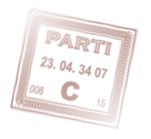

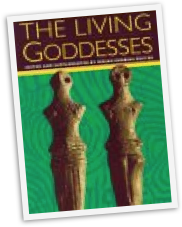



.png)

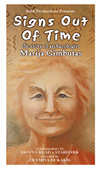


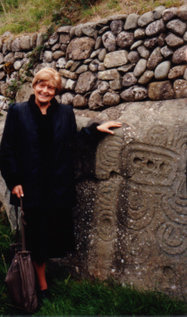
.png)

